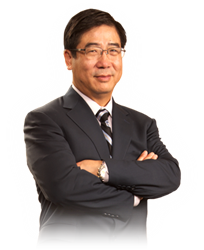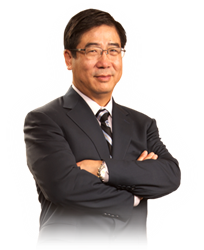
Dr. Kaixuan Liu
With 12 back bones located in the middle region of the back, there’s plenty of opportunity for something to go awry that triggers back pain in this area.
WEST ORANGE, N.J. (PRWEB)
February 12, 2020
When people think of back pain, they tend to picture the beleaguered lower back. But middle back pain – which encompasses the area between the neck and the bottom of the rib cage – is an ache all its own, with specific symptoms and treatments, according to Kaixuan Liu, MD, PhD, founder and president of Atlantic Spine Center.
With 12 back bones located in the middle region of the back, there’s plenty of opportunity for something to go awry that triggers back pain in this area, Dr. Liu says. Symptoms depend on the cause of the problem, but typically include muscle aches, sharp or stabbing pain, dull pain, burning sensations, and muscle stiffness or tightness, he notes.
“Occasionally, more serious symptoms go along with middle back pain, such as tingling, numbness or weakness in the arms, legs or chest, or loss of bladder or bowel control,” Dr. Liu explains. “Get immediate medical attention for these symptoms, of course. But most of the time, middle back pain is a nuisance that will go away in due time and nothing to worry about.”
Causes of middle back pain
Why does middle back pain happen? The reasons are as diverse as the thousands of people who experience it, Dr. Liu says. The long list of causes includes:
- Aging: Pain in any region of the back is more common as people get older. “But aging can lead to less fluid between spinal joints, thinning bones, and lower muscle mass,” Dr. Liu says, “which can all influence back pain.”
- Arthritis: A leading cause of disability in adults, “wear and tear” arthritis in the spinal joints can result in pain in the middle back.
- Poor posture: When you slouch or slump your shoulders, it affects the muscles and ligaments in the middle portion of the back. This can lead to achiness in this region, Dr. Liu says.
- Obesity: When the numbers on the scale rise, so do your chances of back pain – in any area, not just the middle back. “It’s common sense to realize that adding extra weight to your frame places additional strain on bones, muscles and other back structures,” he says.
- Falls or injuries: The middle back is less likely to be injured than the neck or lower spine because it’s more rigid, Dr. Liu says. “But it’s still possible to experience middle back pain due to a hard fall, car accident, sports mishap or other bodily trauma,” he adds.
- Herniated disc: When the gel-like inner core of a spinal disc leaks and pushes against nearby nerves, pain often follows. Herniated discs can occur in any portion of the spine, Dr. Liu notes.
Variety of treatments
If you’re experiencing middle back pain, you’ll likely want to try easy, at-home or in-office remedies to see if they improve the problem. Simple measures may include:
- Applying ice and/or heat: Ice is best for a recent injury, while heat can help aches and pains that linger.
- Over-the-counter NSAIDs: Ibuprofen and naproxen are among the most common nonsteroidal anti-inflammatory drugs you can pick up at the pharmacy to reduce swelling and pain.
- Exercise: Stretches, yoga, walking and other light movement typically help back pain. Don’t stay immobile, Dr. Liu advises.
- Physical therapy: A doctor-prescribed regimen of strengthening exercises and tasks can help your back heal stronger than ever, Dr. Liu says.
- Steroid injections: Targeted shots of steroids into affected spinal disc areas can greatly reduce pain and inflammation, Dr. Liu says.
If non-invasive approaches don’t help your middle back pain and it’s still severe or disabling more than 6 weeks after it began, doctors may consider surgery. A variety of procedures can address this area of the spine.
But preventing middle back pain from happening in the first place is ideal, of course. “There are many ways to protect your spine from pain in this region, including changing your sleeping position, improving your posture (don’t slouch!), and seeing a physical therapist to improve your core strength, posture and spine flexibility,” Dr. Liu says.
Atlantic Spine Center is a nationally recognized leader for endoscopic spine surgery with several locations in NJ and NYC. http://www.atlanticspinecenter.com, http://www.atlanticspinecenter.nyc
Kaixuan Liu, MD, Phd, is a board-certified physician who is fellowship-trained in minimally invasive spine surgery at Atlantic Spine Center.
Share article on social media or email:

